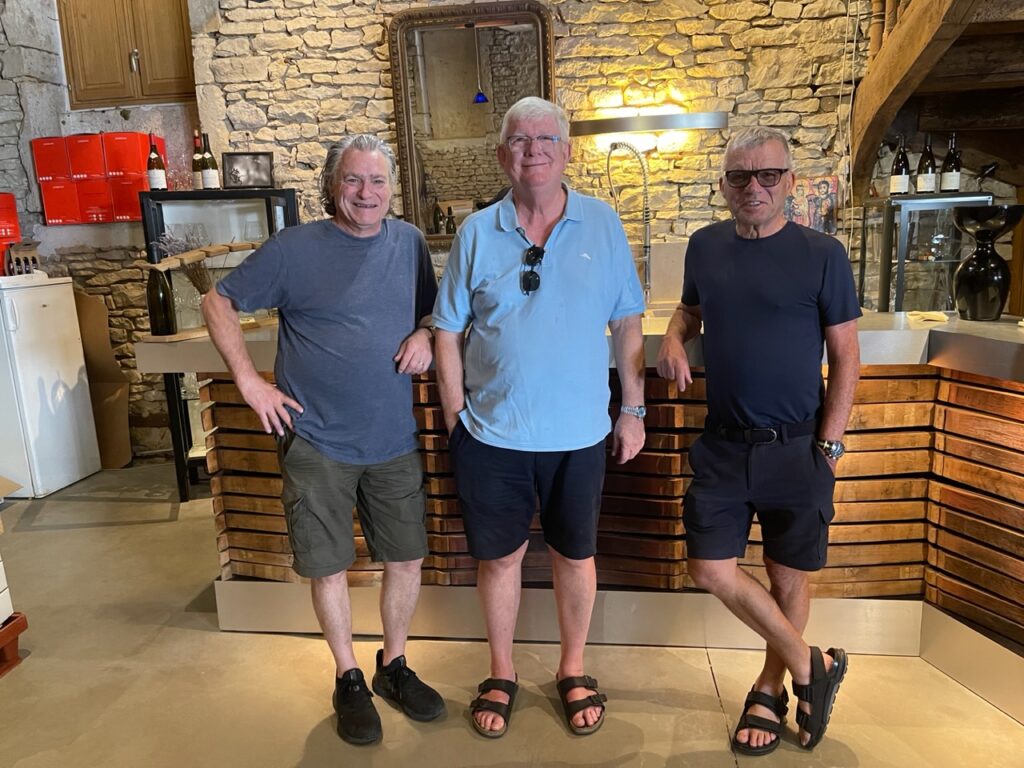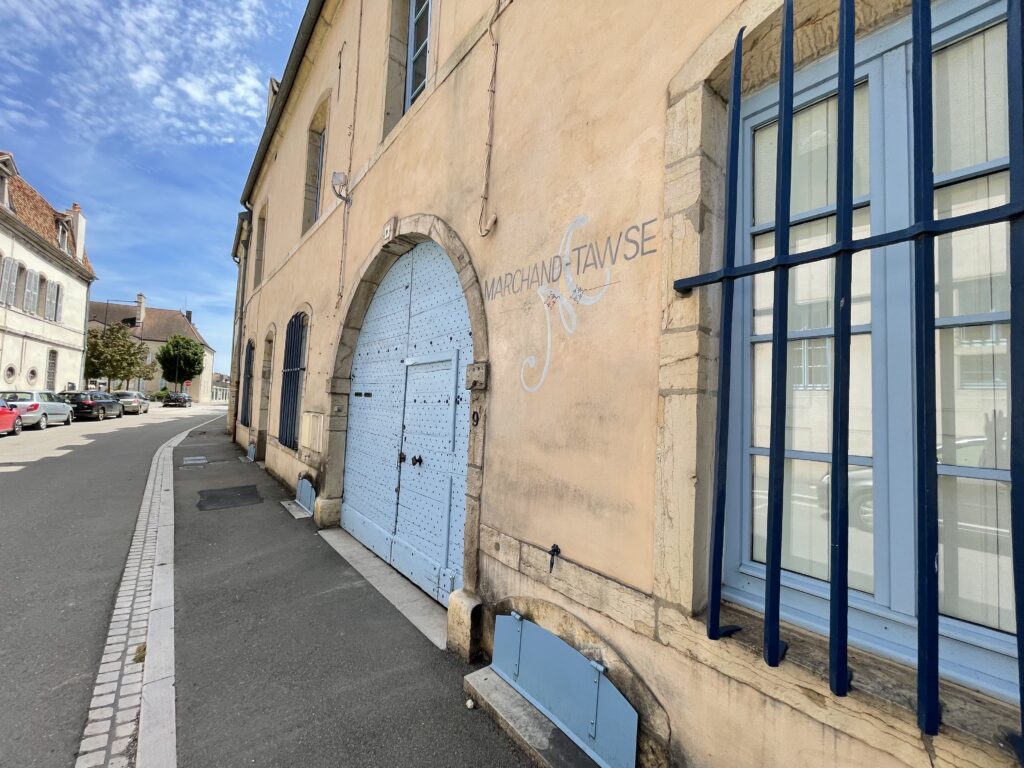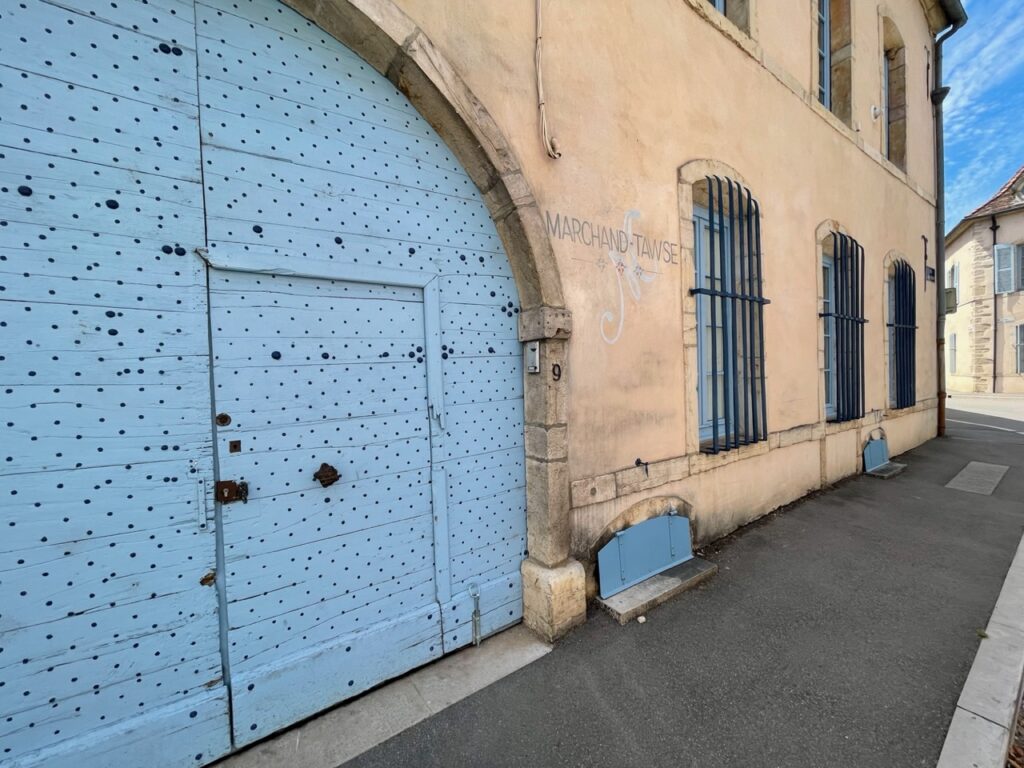Burgundy has a lot of both experienced and clever vignerons, and while I count myself knowledgeable about its wines, I can’t even begin to compare my knowledge that of to Pascal Marchand, my good neighbour and fellow Nuiton.
For me, Pascal is without a doubt one of the most competent and knowledgeable vignerons in Burgundy. He’s a guy my age (give or take), but still obsessed by exploring new ways and techniques that can improve the wine he delivers to the glass.
Recently I met Pascal in the street as he was having a quick lunch with his two co-owners, Moray Tawse and John Harris, both (like Pascal) from Canada.

Typically, Pascal asked me if I could come by an hour or so later to taste a bit of wine in the ‘hood; Marchand-Tawse is at number 7 on our street, I’m at number 5.
Given the timing and the company, I knew this was not the correct time to demur, and knowing the three Canadian gentlemen, I also knew this would be a great and informal session.
The 2022s from Pascal Marchand
The 2022s from Marchand-Tawse are, as expected, both lovely and hedonistic. The wines are appealing, and ’22’s glow and energy make them special.
As in other places, the 2019s are perhaps more refined and detailed, but the effortlessness and joyfulness of the ’22s are a treat that should not be missed.
Pascal is never a man of effusive speech, but he definitely like his 2022s. The elevage is still underway, and the wines are ever changing. As with other vintages, they can close down after bottling. In a few, thankfully rare, vintages, the spellbinding beauty of the barrel tasting is never rediscovered in the bottle.
I will taste the 2022s at a later stage when the wines are closer to bottling to get proper impressions.
One of the main components of any elevage is the use of oak, new and old. The complexity of oak-barrel variation is stunning, and at an estate like Marchand-Tawse – with 50+ different wines per vintage – it is mind-boggling.
The oak game
Marchand-Tawse use a variety of barrels for the elevage: different coopers, different oak origins (Allier, Troncais, etc.), different toasts, different barrel age, and different wood-drying durations – 24 or 36 months. Some barrels are even made from biodynamic wood. Yes, you ready that correctly: biodynamic.
Pascal uses barrels from many tonneliers (Remond, Montgillard, Rousseau … ) in different iterations, giving him a huge variation of impressions he can add to the wines. It’s almost like a Steinway for a pianist or spices for a chef.
Elevage in oak – or in any kind of vessel, for that matter – leaves an impression. Clayver ceramics leaves an impression, as does stainless steel. That impression comes perhaps not from the material of the vessel, but from the oxygen passing through it (or not).
Making wine is a process comparable to making art, and uses a large palate of options to get to the desired result.
At Marchand-Tawse the full range of tools is used. For some wines – where the quantity is sufficient – many different barrels are used to create the impression sought. One wine we tasted (Beaune Clos du Roi) used five different new barrels plus a number of older ones to complete the picture. Please note: Even older barrels that have been used for one, two, and even three wines still leave an impression.
With the Clos du Roi, we tasted the five new barrels blind, and then we were asked to sum up our preferences by ranking them. The result itself is not important (I can’t even recall the details of each type of barrel), but important differences were found among barrels with more or less the same toast.
In the end it’s a question of preference. Some like Troncais oak, others Allier, still others prefer discreet wood over the more flamboyant types.
In Burgundy, sometimes only one barrel is produced, like the Marchand-Tawse Musigny, and thus choices and compromises need to be made. This is done based on experience, preferences, the vintage, and the wine. These are not simple choices. Even the size of the vessel has an influence.
This is the decision these three gentlemen must make with their Musigny every year.
The biodynamic barrel
The tonnelier Montgillard produces a so-called biodynamic barrel that has been cut and manufactured respecting the biodynamic calendar. My guess here is that the tree itself was not planted following biodynamic principles; rather the felling of the tree and barrel-making employed them.
The biodynamic barrel came out well in the tasting, being on the discreet and lively side and giving the wine an effortless character while not forcing a grainy oak structure or sweet or ‘burned’ flavours.
Would I use it for my hypothetical Musigny? I’m not so sure. I think I would prefer a barrel with a stronger character that match that of the wine.
Yes, oak is complex
It was great to experience Pascal Marchand explaining and showing the windows of possibilities.



 - A true vin d’émotion – a Burgundy of passion
- A true vin d’émotion – a Burgundy of passion - A truly hedonistic wine – lively and enjoyable
- A truly hedonistic wine – lively and enjoyable - A vivacious wine for pure indulgance
- A vivacious wine for pure indulgance - A potential vin d´émotion - frais et léger
- A potential vin d´émotion - frais et léger
Steen, just back from Champagne, Herve Jestin (Leclerc Briant) had me taste the vin clairs of there different cooperages, one clay amphora, one neutral oak barrel and the last a gold lined stainless steel barrel. All from the same vineyard and grape type (Chardonnay). Amazing
Steen, just back from Champagne, Herve Jestin (Leclerc Briant) had me taste the 2022 vin clairs of there different cooperages, one clay amphora, one neutral oak barrel and the last a gold lined stainless steel barrel. All from the same vineyard and grape type (Chardonnay). Amazing how much the cooperage marked the still wine. The gold plated barrel was just pure yummy ripe fruit Bill Widing, Seattle